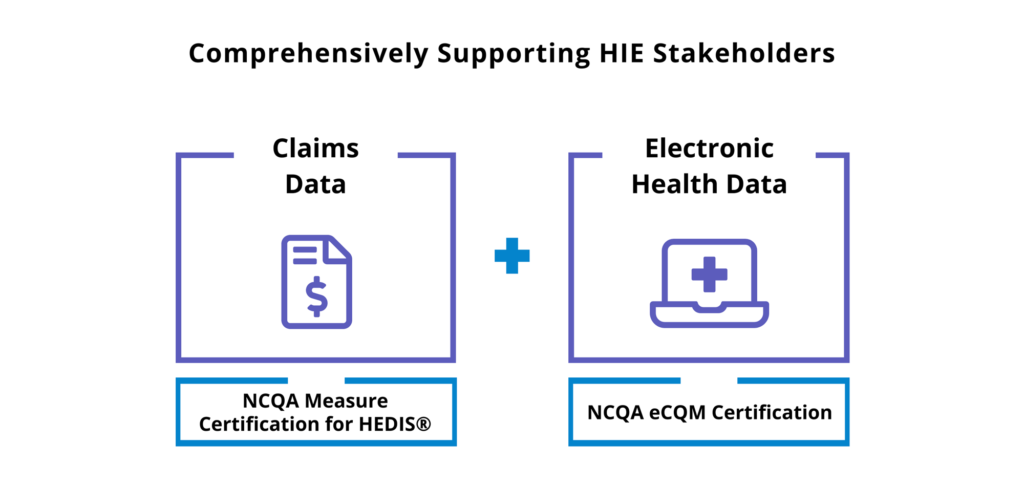The Evolution of HIEs and Health Plans: Benefits of Providing Both NCQA eCQM Certification and Measure Certification℠ for HEDIS®

In today’s dynamic health care industry—one that’s hyper-focused on the transition to paying for performance—payers must be fluent in quality measurement and comfortable moving between data sources. Reducing burden while upholding quality is an effective approach to enabling improvement. Agnostic data ingestion, complex measure calculation and actionable analytics are highly valued for this work.
Providing HIE services that are both NCQA eCQM and NCQA HEDIS® Measure Certified enables payers to develop a thorough understanding of their attributed populations using claims and electronic quality measurement to make complex inferences about a population, without the added burden. The byproduct of this technology is improved understanding and awareness of performance, which directly benefits payers and indirectly affects providers, teams, patients, communities and the system.
The Criticality of Data for Health Plans
Payers represent one of the most competitive markets in the health care system. Although there is urgency to reduce health care costs, for payers it is not about how cheaply a service is offered. The competition lies in the performance of quality measures.
NCQA’s Health Plan Accreditation (HPA) is one of the most rigorous forms of external review. The program builds on 30 years of experience and was one of the first to base results on measurable performance. HPA combines a robust set of standards and the Healthcare Effectiveness Data and Information Set (HEDIS) to assess the value of care.
HEDIS measures are a quantifiable way to make like comparisons across settings. Historically, HEDIS measures were calculated using administrative data—billing codes from claims files—to measure performance. NCQA’s HEDIS Measure Certification was developed to help health plans find and use vendors that can help them meet the rigorous reporting goals of HPA. Health plans that use NCQA HEDIS Measure Certified vendors can be confident that measure calculations are accurate, since this certification program ensures the highest level of measure logic review.
Because not all measures can be completely reported using claims data alone, NCQA released hybrid data collection. Hybrid HEDIS measures allow payers to close data gaps with medical record data. But while the Hybrid Method may yield more accurate performance results, it requires significant manual work to chart-chase and perform detailed patient record reviews.

Electronic Clinical Quality Measures (eCQMs) use electronic health data to assess the quality of health care. Measures use standardized codes, value sets and measure logic to electronically define clinical concepts and assess performance. NCQA Certified eCQMs are advantageous to payers. Not only do they provide data that typically covers gaps in claims measures (e.g., blood pressure values not included in billing codes), they are considered standard supplemental data for HEDIS Measurement Year 2020. This means that manual chart reviews and external auditor reviews may not be needed for this type of data reporting, thus saving time, money and resources.
The added benefit to HIEs that have this capability is that these same eCQMs are used for reporting in many value programs, including CMS’s Quality Payment Programs (MIPS) and NCQA’s Patient-Centered Medical Home (PCMH), so value can be scaled with the same services.
Everything is moving to digital: clinical documentation, advanced directives, care coordination. This has created the perfect storm of challenges that includes reinventing how care is provided with technology and how performance is monitored, improved and reported. As the need for technology increases and reducing burden is paramount, technology that is validated to support quality measurement across data sources conveys a more comprehensive representation of quality of care through these challenging times.
References:
https://www.medicaleconomics.com/news/increasing-value-when-negotiating-payers
This website stores data such as cookies to enable essential site functionality, as well as marketing, personalization, and analytics. By remaining on this website you indicate your consent. For more information please visit our Privacy Policy.

